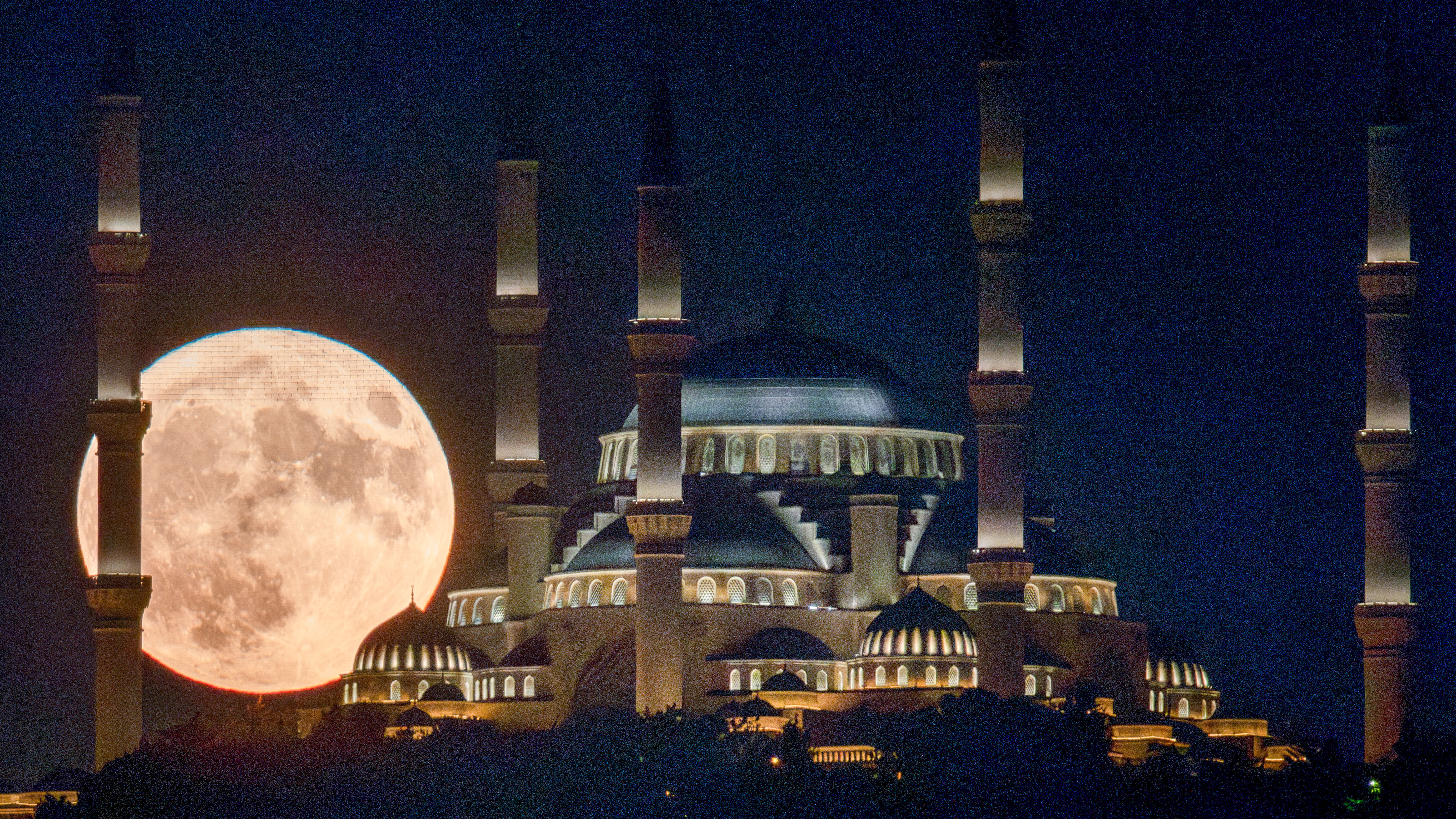Astrophotography in October 2024: what to shoot in the night sky this coming month
Everything you need to know about what’s happening in the night sky this month

Night begins earlier in the northern hemisphere in October, and there are a host of celestial spectacles for astrophotographers this month. From a potentially naked-eye comet, Tsuchinshan-ATLAS, to a 'ring of fire' annular solar eclipse for intrepid eclipse-chasers and the year's biggest 'supermoon,' there's plenty to capture in the night sky. As a bonus, there's the Orionid meteor shower at the end of October, whose 'shooting stars' have an intriguing story behind them that always goes down well on social media.
Here’s everything you need to know about astrophotography in October 2024…
Tuesday, 1 October-Friday, 6 October: Dark sky window
A new moon on 2 October means dark skies for a week before and a few nights after, when a crescent moon will set soon after sunset. That makes the first week of October ideal for wide-angle and deep-sky astrophotography, and astronomy. It's a final chance to image the Milky Way this year before it sinks into the horizon until spring. It will be visible in the southwest immediately after sunset, but only if you're away from light pollution.
Read: How to photograph the Milky Way.
Tuesday, 1 October - Wednesday, 2 October: Comet Tsuchinshan-ATLAS
Remember Comet Neowise? The appearance of a naked-eye comet during the coronavirus not only delighted astrophotographers but attracted many others to the hobby. Could there be another chance this month? If Comet C/2023 A3 (Tsuchinshan-ATLAS) brightens as predicted, it could become a naked-eye object on two separate occasions this month. This first apparition will occur in the east about an hour before sunrise. Use a tripod, wide-angle lens, a long exposure of around 5 to 10 seconds, a relatively high ISO and an ISO of between 800 and 3200. Use a pair of binoculars if it’s not bright enough to see with the naked eye.
Read: How to photograph comets
Wednesday, 2 October: ‘Ring of Fire’ annular solar eclipse
Today, South America will see a partial solar eclipse, with those inside a narrow path through the Pacific Ocean, Chile and Argentina able to photograph a ‘ring of fire’ around the moon as it eclipses up to 93% of the sun. Visiting astrophotographers will need to use solar filters at all times and only watch it through the LCD screen on the back of a camera. Easter Island (Rapa Nui) is the most iconic location for eclipse-chasers; it's home to over 1,000 mysterious stone statues called moai. Others will head to southern Patagonia, most likely to the Atlantic coast of Argentina, for the highest chance of clear skies.
The best camera deals, reviews, product advice, and unmissable photography news, direct to your inbox!
Read: Best solar eclipse binoculars.
Saturday, 12 October - Wednesday, 16 October: Comet Tsuchinshan-ATLAS
If the comet survives its close encounter with the sun, it could also become naked-eye bright after sunset during October. Be outside looking west after sunset for a short window of opportunity. It’s even possible that it will have two tails.
Read: The best lenses for astrophotography
Thursday, 17 October and Friday, 18 October: ‘Hunter’s Supermoon’
So-called ‘supermoons’ are slightly larger than most full moons because they’re closer to Earth than on average. It’s not something that the casual observer will ever notice, so some dismiss ‘supermoons’ as pure hype. However, as well as an excellent opportunity for astrophotographers to promote their work on social media, there’s always one supermoon each year that’s the biggest. Cue the ‘Hunter’s Moon,’ the biggest and brightest full moon in 2024. A full moon always looks more impactful during dusk, which it will do on successive nights. It will rise just after sunset on Thursday, 17 October, with a slightly more impactful rise during twilight on Friday, 18 October. For either, orient your set-up to the east at moonrise where you are.
Read: How to photograph the full moon
Wide-angle shot of the month: Orionid meteor shower
Expect between 10 and 20 ‘shooting stars’ from the Orionids meteor shower’s peak, expected in the early hours of Monday, October 21. They’re named after the region of the night sky where meteors strike the Earth’s atmosphere each year – the famous constellation of Orion. However, the more interesting story behind the Orionids is that they’re produced by dust and debris from Halley’s Comet striking Earth’s atmosphere. It was last in the solar system in 1986 and will return in 2061.
Since this isn’t a particularly prolific meteor shower, it’s one to photograph automatically. You only need a manual camera on a tripod, a wide-angle lens, 30-second exposures and an ISO of about 800. Experiment until you get a lovely, sharp, great-looking image of the night sky. Then, use an intervalometer or continuous mode and a manual shutter release cable in lock mode to take exposures after exposure. You can leave it to do its thing for many hours; Orionid meteors travel super-fast, but with long exposures, you should catch one or two. Since the Orionids will come from the east, orienting in that direction makes sense, though the ‘shooting stars’ can appear anywhere.
Read more:

Jamie has been writing about photography, astronomy, astro-tourism and astrophotography for over 15 years, producing content for Forbes, Space.com, Live Science, Techradar, T3, BBC Wildlife, Science Focus, Sky & Telescope, BBC Sky At Night, South China Morning Post, The Guardian, The Telegraph and Travel+Leisure.
As the editor for When Is The Next Eclipse, he has a wealth of experience, expertise and enthusiasm for astrophotography, from capturing the moon and meteor showers to solar and lunar eclipses.
He also brings a great deal of knowledge on action cameras, 360 cameras, AI cameras, camera backpacks, telescopes, gimbals, tripods and all manner of photography equipment.



